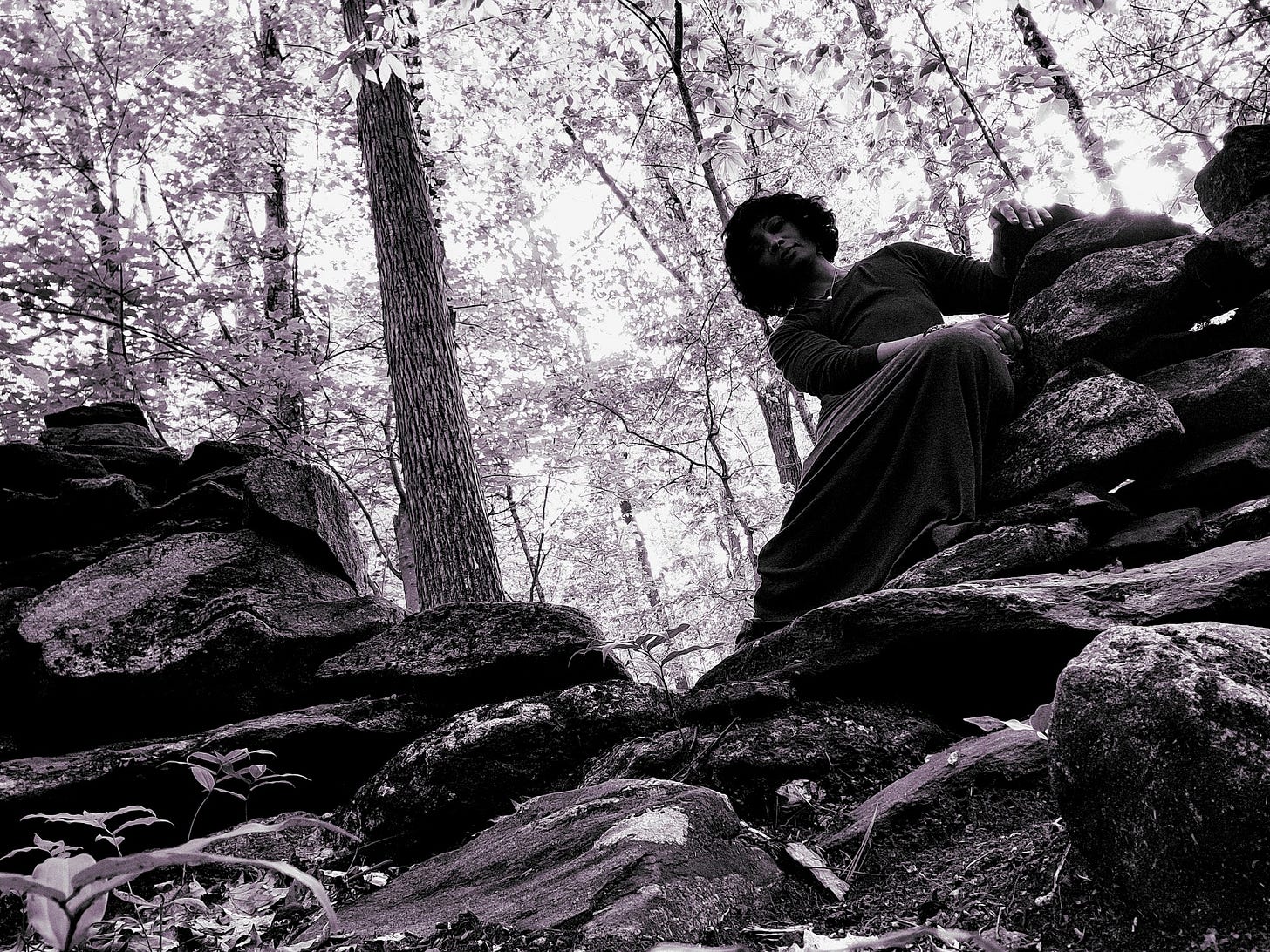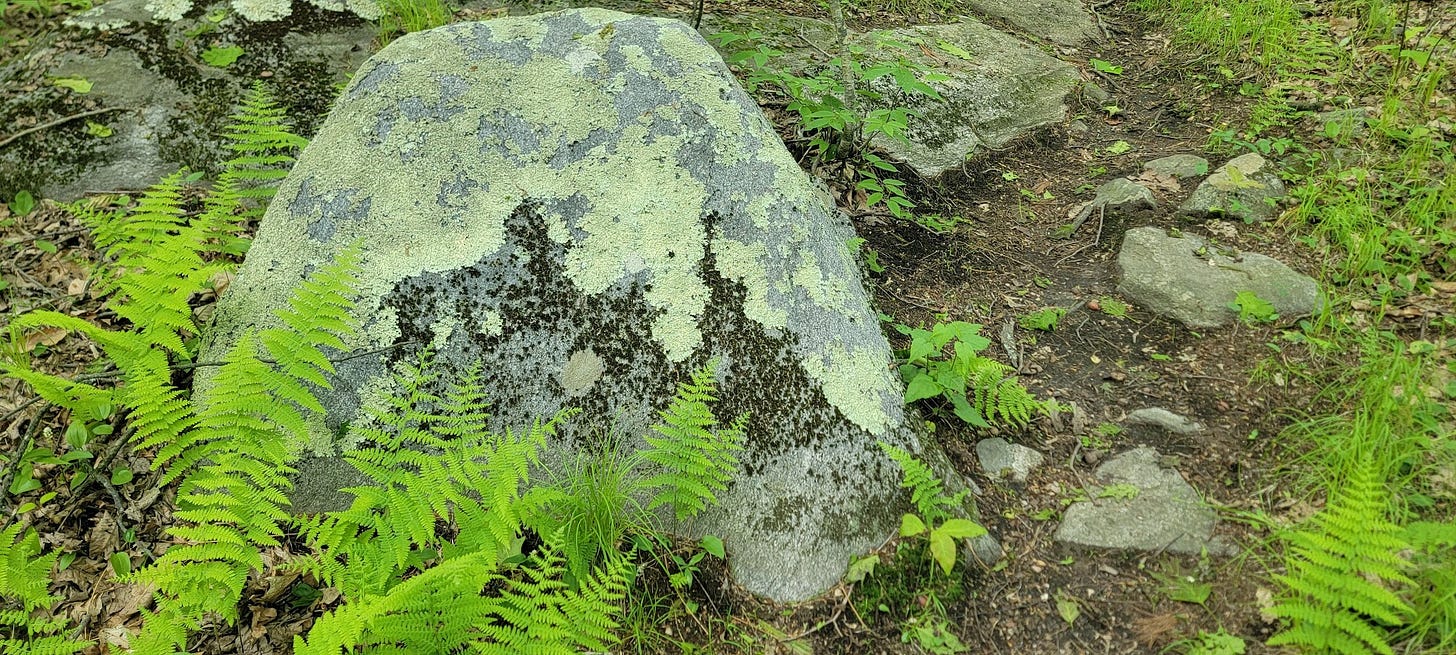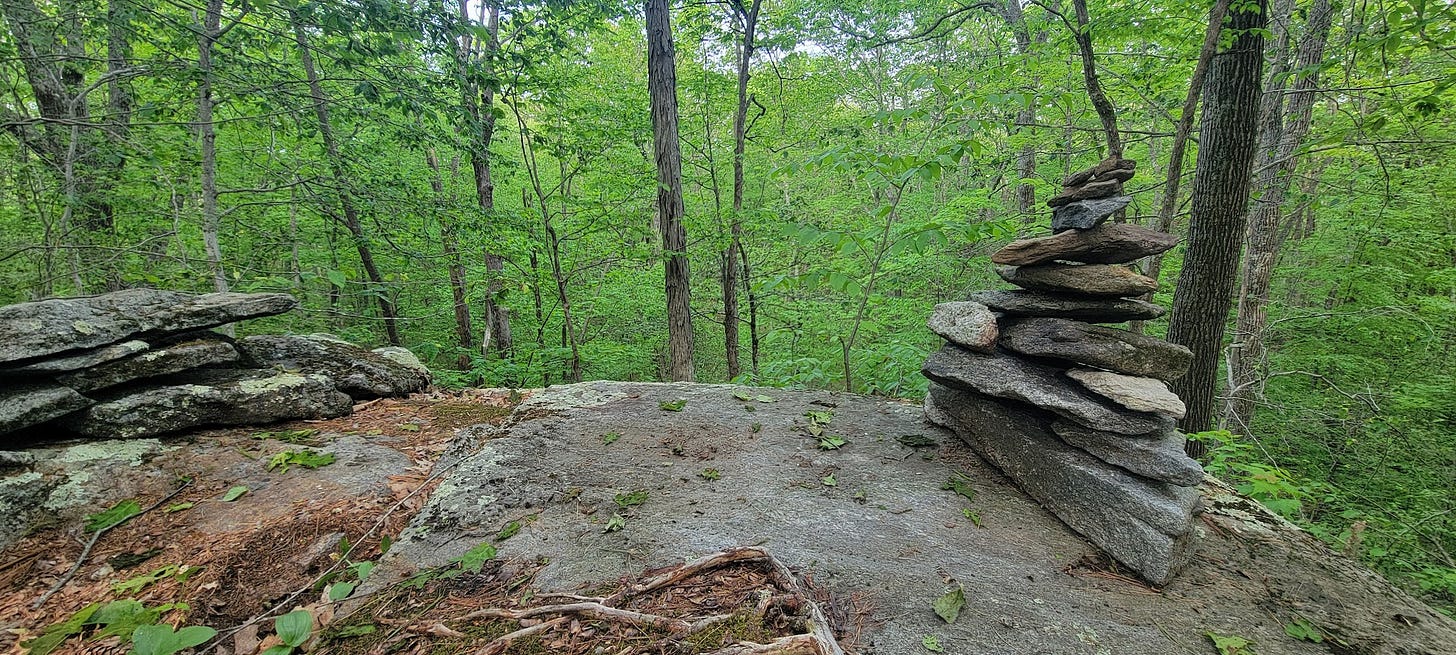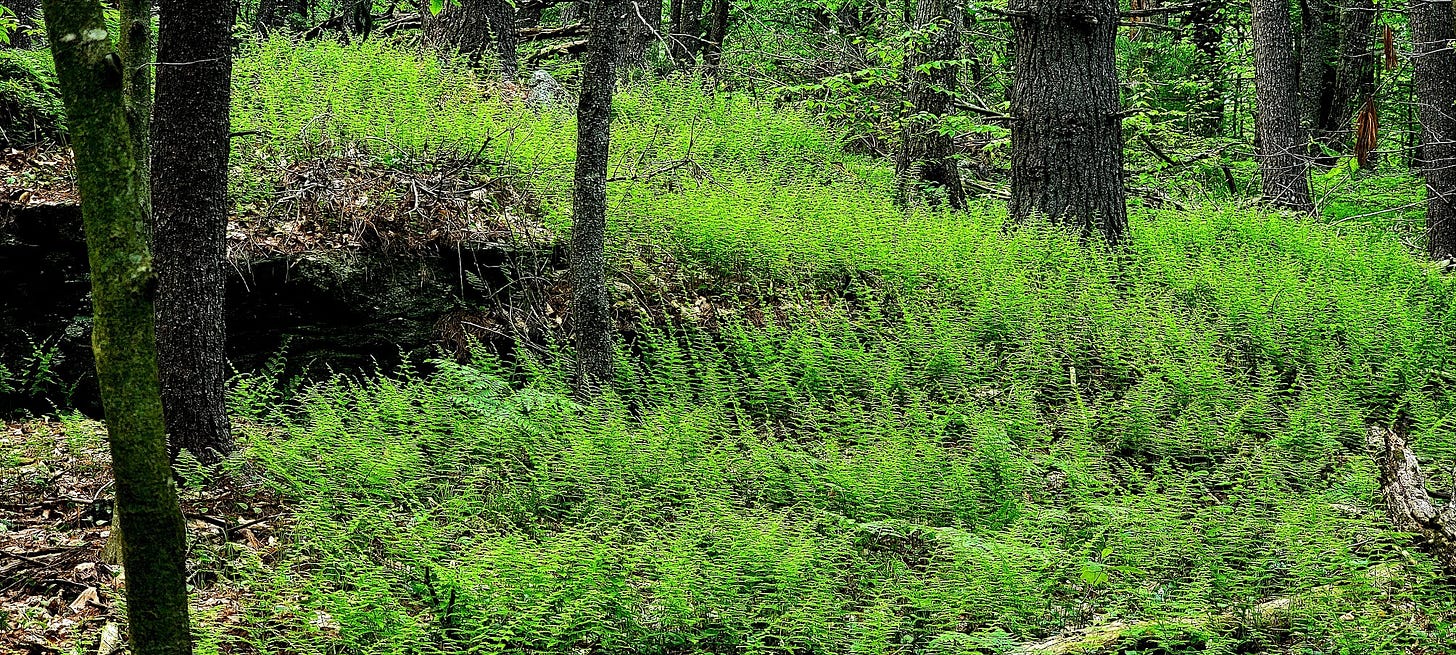Absolutely Unmixed Attention is Prayer:
Poiesis and the Making of Interreligious Wisdom Pt. I of II

I’ve spoken a bit about about my relationship with Buddhism (it is more accurate to say different kinds of Buddhisms). The other part of my Buddhism and Interreligious Engagement program is - well - Interreligious Engagement. Now that I am back from this weeklong retreat learning about Navayana Buddhism, I thought I would share some of my writing on Interreligious Engagement which comes out of the Thinking Across Traditions course I took this spring. I’m open to any questions you have about terms or my thinking here.
Interreligious Engagement is important whether or not a person identifies with a religious tradition or not. By virtue of living in public, a person’s imagination has been shaped in some way by religious frameworks - in seminary we call this ‘embedded theology’. There are many examples of ‘embedded theology’ but one example is someone who identifies as spiritual but not religious, and grows up in a context wherein Christianity is a dominant religion. This person may have an implicit bias about positive experiences like inspiration, hope or comfort coming from above (the space of Heaven) rather than from below (the space of Hell). As an artist it is helpful to understand more clearly the forces which shape public imagination because these are the forces that shape the meaning making around my work as well. Poiesis is, after all, the Greek term from which we get the word poetry. It refers the work of making - a making that brings things into being. I hope you enjoy. :)
A mysticism of participation is here in play…
- Catherine Keller, Intercarnations: Exercises in Theological Possibility
Absolutely Unmixed Attention is Prayer, is a line from Gravity and Grace, a book by French philosopher and Christian mystic Simone Weil. Born into an agnostic Jewish family, Weil studied Vedanta Hinduism, Mahāyāna Buddhism, and most famously, wrote about her vivid love for Christianity, though she described herself as staying outside of Catholicism.1 Weil’s life was a socially engaged, deeply interreligious experience throughout and this poetic aphorism Absolutely Unmixed Attention is Prayer, emerges as an example of interreligious wisdom that arises from a field of interreligious engagement.
It is through Weil's personal and meditative writing that Absolutely Unmixed Attention is Prayer emerges as a phrase, weaving together the seemingly disparate - a Buddhist concept of samādhi, or deep concentration, with a Christian practice of prayer.
It is through personal, aphoristic and meditative writing then, that this essay seeks to think about the meaning of theopoetics and to feel the movement of theopoetics - or the work of ‘God-making’- between Buddhism (Zen) and Christianity.2 John J. Thatamanal, Oluwatomisin Olayinka Oredein and Catherine Keller are among a group of contemporary constructive theologians who believe theology to be a work of creative human production, also known as theopoetics - emerging from a witness of human life and forming a mutable ‘node’ of activity of what God is and does.3 4 5
Except, immediately emerges a problem.
To speak of ‘theos’ is to speak of God, and while Mahāyāna Buddhism acknowledges the existence of divine beings, these beings do not operate like a God of any Abrahamic tradition. Buddhist deities and the Christian God do not have the same narrative roles within their respective religions nor the same relational needs from their practitioners, so how can theopoetic movement between these traditions be described? Perhaps interreligious poetics can be used to describe the work of “be-coming and be-speaking” between religions with diverse relationships to God, deities or the absence of either.6
Still, ‘inter’ as a prefix presupposes a kind of purity of fixed religious space which can be fully entered and left, and too conveniently sets the porous nature of religion aside. And if we can be porous with each other in our qualities of reading and writing, would it not follow that the theo/poetics arising out of our religions would be to each other also? Theo/poetics as a term which allows for some space to work around a God frame is not wholly satisfactory, still we can use it as a path to move through wooded territory. Perhaps there is something still yet to discover. After all, the growth of Biblical cedars of Lebanon and pines in Zen teachings can live in the same forest and everyone’s talking underground no matter what your leaves look like on the surface. In fact, there is no larger wisdom of the forest without these conversations. How then can this larger wisdom of multi-religious “be-coming and be-speaking” emerging from porous, changing traditions be expressed?
Another problem emerges.
Beyond the theistic/atheistic binary are traditions which emerge out of Indigenous relational frameworks and worldviews being performed all the time. To neglect the possibility of the influence of Indigenous poiesis (the act of making or creative activity) in these traditions on theo/poetics would seem to suspend an understanding of the dynamic porosity which keeps the forest alive and talking. Who and what else is this work of be-coming then porous to? In Theopoetics in Color: Embodied Approaches in Theological Discourse, Oredein describes theopoetics as “giving voice to the orders and disturbances, speaking from healing and from where it hurts, trying to figure out justices and injustices, breakdowns and resurrections, setbacks and opportunities, losses and blessings, unexpected turns, being lost and being found, perhaps again and again.”7
What Oredein describes is not a theology that descends from another place, hovering above the surface of the Earth, but a theology that seems to erupt from within it, creating the conditions that God is asked to work through and around.
Catherine Keller in Intercarnations: Exercises in Theological Possibility generously offers “We are at once making ourselves God and making God” and asks “Is such God-creating really only code for making God up?”8
Who is the ‘we’ in Keller’s statement? If constructive theology is a human production then it is also an earthly one since, as theologian Karl Barth has famously described, theology is an orientation device - to navigate, at least in part, or initially - life on earth.9 As an earthly production, perhaps there is room for the Earth itself to be cited as a co-conspirator in this God-making. The earth is the stage on which the human-being trusts their first lessons about life and death, cycles of light and darkness (and, oh! light again), as well as the idiosyncrasies of non-human animals, weather patterns, living waters and elemental qualities to be experienced in all of their erotic power. Even if one must cling to a hierarchy of “liveness and sentience” between the human and non-human forms, perhaps the offerings of the Earth can still be identified as labors in service of - among many things - the work of theo/poetics.10 After all, what sacred text can do the work of God-making or orientation making - without the use of earthly pedagogies, metaphors and similes?
Something more expansive is needed. Theo/poetics and the notion of a not-quite-porous religions within discussions of interreligious wisdom can get us only so far as frameworks. To look back over the path trod, there stands the intelligence of the forest felt as a whole. Christianity’s Cedars of Lebanon, Sikhism’s Beri trees, Buddhism’s Bodhi trees and Pines. The moon illuminates Judiasm’s Trees of Life everywhere.
What arises from focused attention to the whole is not a theos but a telos, a telopoetics of creative making which is concerned with purpose not only philosophy’s love of wisdom.
If Weil’s ‘absolutely unmixed attention’ can be thought of as a quality of attention that concentrates on what unifies an area of focus, Telopoiesis is the resulting prayer - a distinct form of prayer borne from a diversity of earthly experience and imagination which seeks orientation through articulations of purpose.11
As theologian Catherine Keller offers: “those of us in search of planetary alliance…neither ban nor impose God but keep in play between all our discourses the poetics, the poiesis – the ancient Greek term for creating, making – by which meaning materializes.12 Telopoiesis moves transcendentally, across the surface of the earth “be-coming and be-speaking” in a register that acknowledges traditions and cultures as nodes of practice without clearly defined boundaries. 1314 Telopoiesis allows for participation in a kind of imaginative work that materializes in the turning of the wheel of the Dharma and powers the theopoetics of ‘God making’ by constructive theologians and anyone seeking to work as poet in this prayer for purpose. All are needed here.
Part II next week.
Weil, Simone, Janet Martin Soskice, and Malcolm Muggeridge. 2021. Waiting for God. (Routledge, an imprint of the Taylor & Francis Group), 47.
It is more accurate to speak of Christianities rather than Christianity only but Weil was also unspecific in her Christian focus, positioning herself however, in relationship with Catholicism.
Thatamanil, John J. What is Constructive Theology?: Histories, Methodologies, and Perspectives, 32.
Oredein, Oluwatomisin Olayinka, Lakisha R. Lockhart-Rusch, and Cláudio Carvalhaes. Theopoetics in Color: Embodied Approaches in Theological Discourse (William B. Eerdmans Publishing Company), 10.
Keller, Intercarnations: Exercises in Theological Possibility, 106.
Thatamanil, John J. What is Constructive Theology? : Histories, Methodologies, and Perspectives (T&T Clark), 38.
Oredein, Theopoetics in Color: Embodied Approaches in Theological Discourse, 10.
Keller, Intercarnations: Exercises in Theological Possibility, 110.
Barth, Karl, and Michael Allen. 2012. Karl Barth’s Church Dogmatics : An Introduction and Reader. London: T & T Clark.
Michael Silverstein, “Hierarchy of Features and Ergativity,” Grammatical Categories in Australian Languages, ed. R.M.W Dixon (Australian Institute of Aboriginal Studies, 1976), 112–171 as referenced by Mel Chen, Animacies: Biopolitics, Racial Mattering and Queer Affect (Durham: Duke University Press, 2012), 24.
This is distinct from the differences of forms being rendered illegible in the forest.
Keller, Catherine, Intercarnations: Exercises in Theological Possibility (New York, NY, 2017; online edn, Fordham Scholarship Online, 18 Jan. 2018), 106.
Ibid, 106.
Thatamanil, John J. What is Constructive Theology?: Histories, Methodologies, and Perspectives (T&T Clark), 38.






